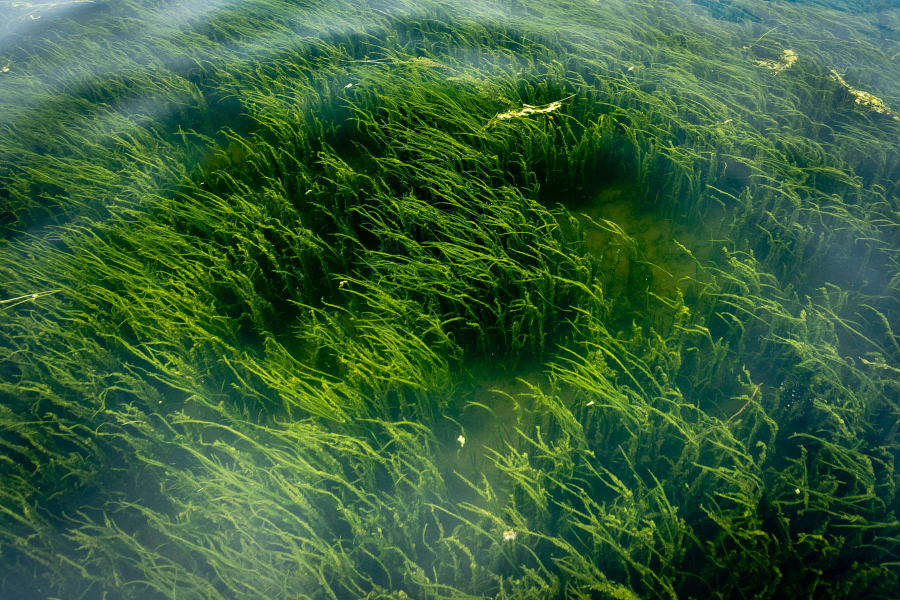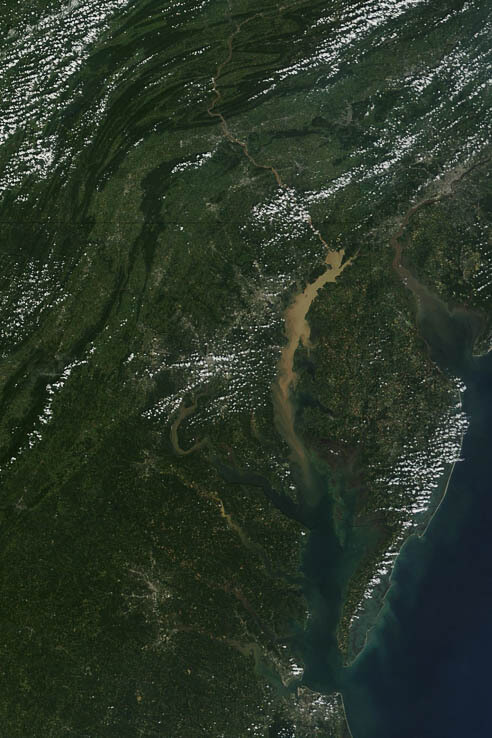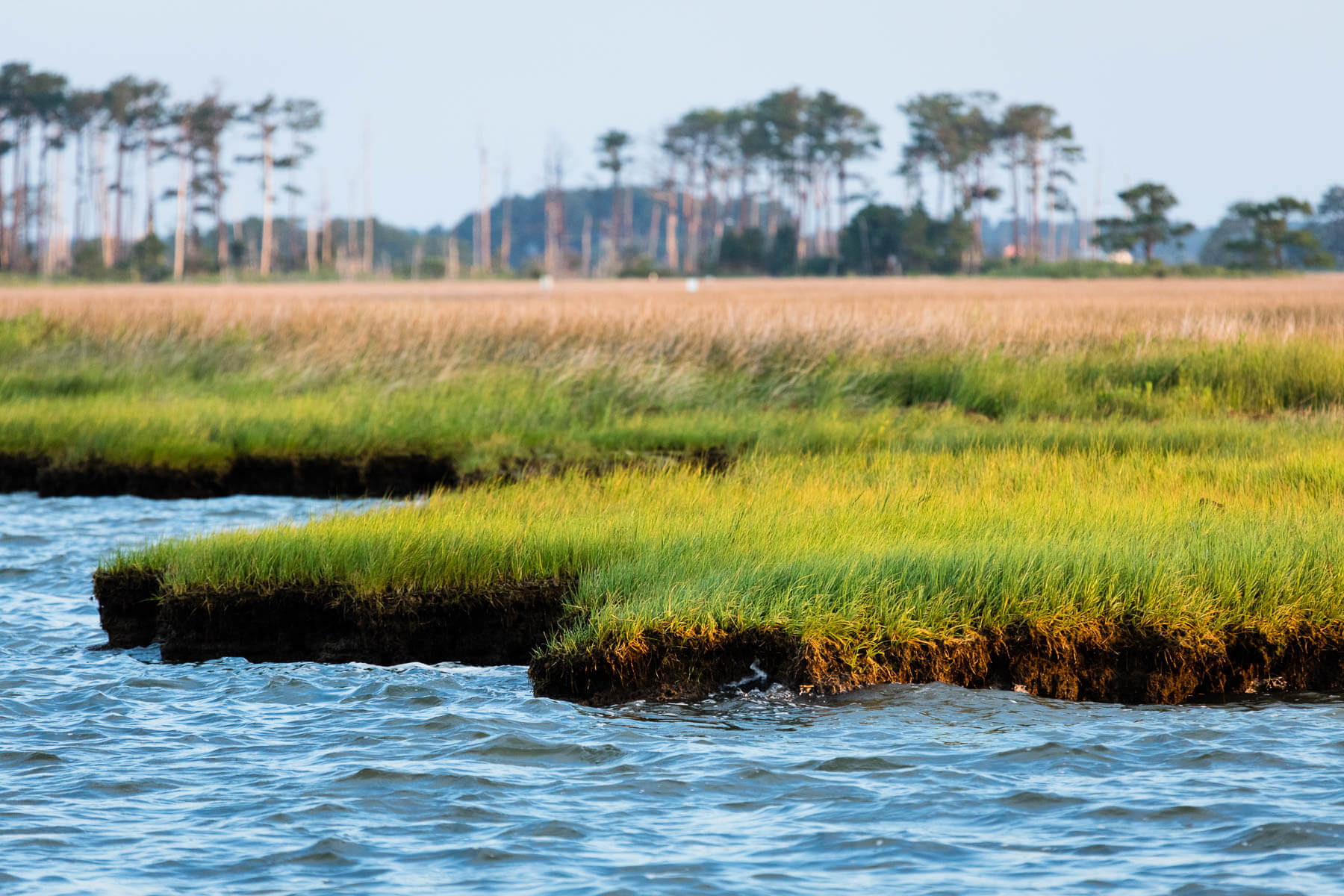A look back at 30 years of water clarity
Our Scientific and Technical Advisory Committee reviews three decades of data

Since the founding of the Chesapeake Bay Program in 1983, our scientists have been collecting data from all over the watershed. The Chesapeake Bay watershed is huge, covering 64,000 square miles with a multitude of organizations all studying the natural world. The Bay Program offers several unique benefits, but none so worthwhile as it’s ability to standardize data collection across the seven watershed jurisdictions, many federal agencies, 10 academic institutions and more than 30 scientists, and make that data available in one place.
The Chesapeake Bay Monitoring Program, a Bay-wide cooperative effort, allows our scientists to look at that data each year to detect changes in the ecosystem. Recently, the Chesapeake Bay Program’s Scientific and Technical Advisory Committee reviewed that data to see where we are today and what it might mean for our future.
What is water clarity?
Water clarity helps fish see prey and predators and is important for the health of underwater grasses, but what exactly is it? Water clarity has to do with how clear the water is, and it has two common meanings.
One way people think about water clarity is how cloudy the water appears to the human eye. We measure this with a simple device called a Secchi disk, a flat circle with four alternating patches of black and white color. The disk is lowered into the water on a pole or a string until a person can no longer see it clearly. The depth at which the disk disappears is the Secchi disk depth.
The scientific understanding of water clarity is how much sunlight is penetrating through the water. This is measured with a detecting device called a radiometer, which measures light attenuation—the reduction in the intensity of light as it moves through the water.
Water clarity can be affected in the short term, like a passing boat or storm churning up the sediment on the bottom, or long term, like changes in nutrient pollution that affect phytoplankton life cycles. Reviewing changes in water clarity helps to identify both short- and long-term impacts.
Over the three decades of data reviewed in the STAC report, light attenuation trends are improving while Secchi disk trends are getting worse. What this means is that over the years, more and more light is penetrating the water’s depths even though the water looks cloudier to the human eye.

Sunlight and sediment
The clarity of the water has to do with what is causing that cloudiness: the sediment, the litter, the waste of fish and plants, the soil, the pollution and the nutrients and toxic contaminants that affect them all. “Suspended solids” is the term for all those elements contained in the water. Larger, heavier particles are more likely to settle to the bottom while lighter ones float higher.
The changing composition of the suspended solids in Bay waters needs to be more closely studied, but there is a clear trend in the data: there has been a long-term shift in the Bay’s sediment pollution to finer, more organic-rich particles in the water. While we are reducing the amount of sediment in the water, and more light can reach through it, the fine materials of the sediment make the water appear cloudy, like mixing a powder into a drink.
The impact of algal blooms on clarity
Algal bloom is a term that refers to the out-of-control growth of tiny plants and the small life forms that live with them: single-celled organisms, floating seaweeds and phytoplankton. Algae form the base of the food chain, but their blooms can produce toxins or eat up oxygen and block sunlight as they die.
Algal blooms are distressing when they occur and can have a big impact on water clarity, but their effect is often temporary. The blooms are short-lived, and the grasses that live in that area are usually able to recover once the bloom passes. If blooms—which are fed by excess nutrients entering the water—continue to happen on a regular basis, however, that can have a long-term negative effect on underwater grasses and water quality.
Underwater grasses and bivalves rely on clear water, and vice versa
More light reaching through the water is good news for underwater grasses: grasses need that sunlight in order to grow and flourish. As water clarity improves in some areas, we are seeing a resurgence in the population of underwater grass beds.
These grass beds slow down the force of waves, which helps shoreline habitats to recover. As plants that take in resources and produce oxygen, they help to reduce nutrients in the water. Young fish and crabs also use underwater grasses as their nursery, so helping underwater grasses to recover by improving water clarity benefits the larger ecosystem.
Local improvements in water clarity are also linked to population explosions in bivalves—creatures like clams and oysters. Like the underwater grasses, bivalves also improve water clarity when their populations are large enough. For example, an Asiatic clam species, Corbicula fluminea, was first observed in the Potomac River in the 1970s. When the clam population increased substantially in the early 1980s, phytoplankton—a microscopic algae that the clams eat—decreased and water clarity increased. The year after the clam boom, underwater grass beds flourished. When the clam population declined in the late 1980s and early 1990s, so did water clarity and underwater grasses.

How to improve water clarity
Best management practices are designed to reduce the excess nutrients getting into waterways, and their effectiveness is starting to be shown in the data.
Managing nutrient levels improves water clarity. The seven watershed jurisdictions have been reducing their nitrogen and phosphorus levels under the Chesapeake Bay Total Maximum Daily Load, while those who live, work and recreate in the watershed are reducing their contributions by being more conscientious about their everyday actions.
Controlling shoreline erosion and reducing sediment into rivers helps with water clarity, but hardening shorelines (with bulkheads, seawalls and other manufactured harsh divides) has a negative impact. Therefore, some of the best methods for combatting erosion and sediment pollution are to restore natural processes like living shorelines and wetlands. Plants, whether on the shoreline or under the water, help prevent erosion but allow sediment to be deposited. This replenishment of the living shoreline helps rebuild mollusk and underwater grass populations.
Given the intricate network of rivers and streams in the watershed, much of the sediment is trapped in streambanks and wetlands before it reaches the Bay. However, large storm events like Hurricane Isabel in 2003, Tropical Storm Lee in 2011 and the above-average rainfall of 2018 and 2019 dislodge all that dirt and send it pluming into the Bay. The sediment gathered throughout rivers and streams can act much like the snow on a mountain that gathers to a critical point and triggers an avalanche. In the Chesapeake watershed, intense storms are the triggering point for our own sediment avalanches. The extreme weather patterns across the watershed in the last few years show our climate is changing, meaning heavier storms, and their impact on sediment, may be here to stay.
Read more in the STAC report, “Understanding and Explaining 30 Years of Water Clarity Trends in the Chesapeake Bay’s Tidal Waters.”

Comments
There are no comments.
Thank you!
Your comment has been received. Before it can be published, the comment will be reviewed by our team to ensure it adheres with our rules of engagement.
Back to recent stories